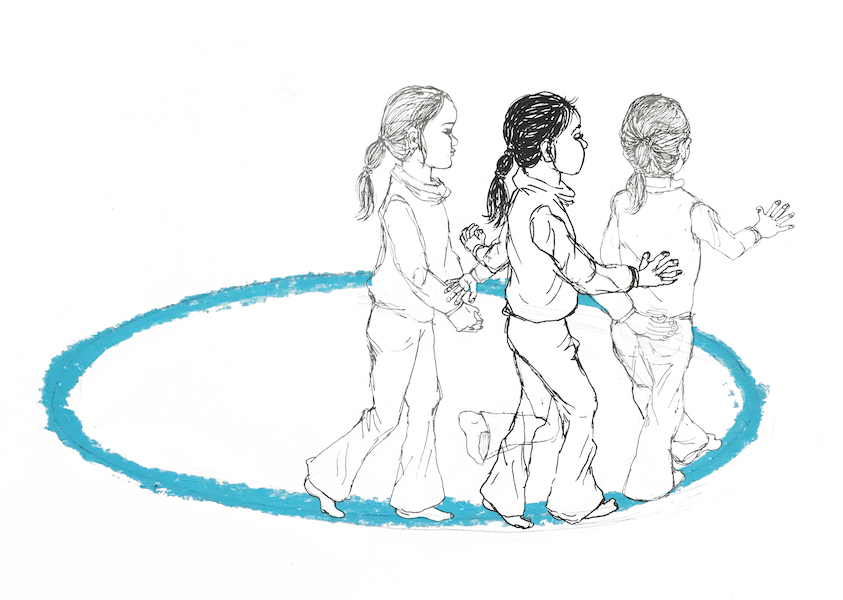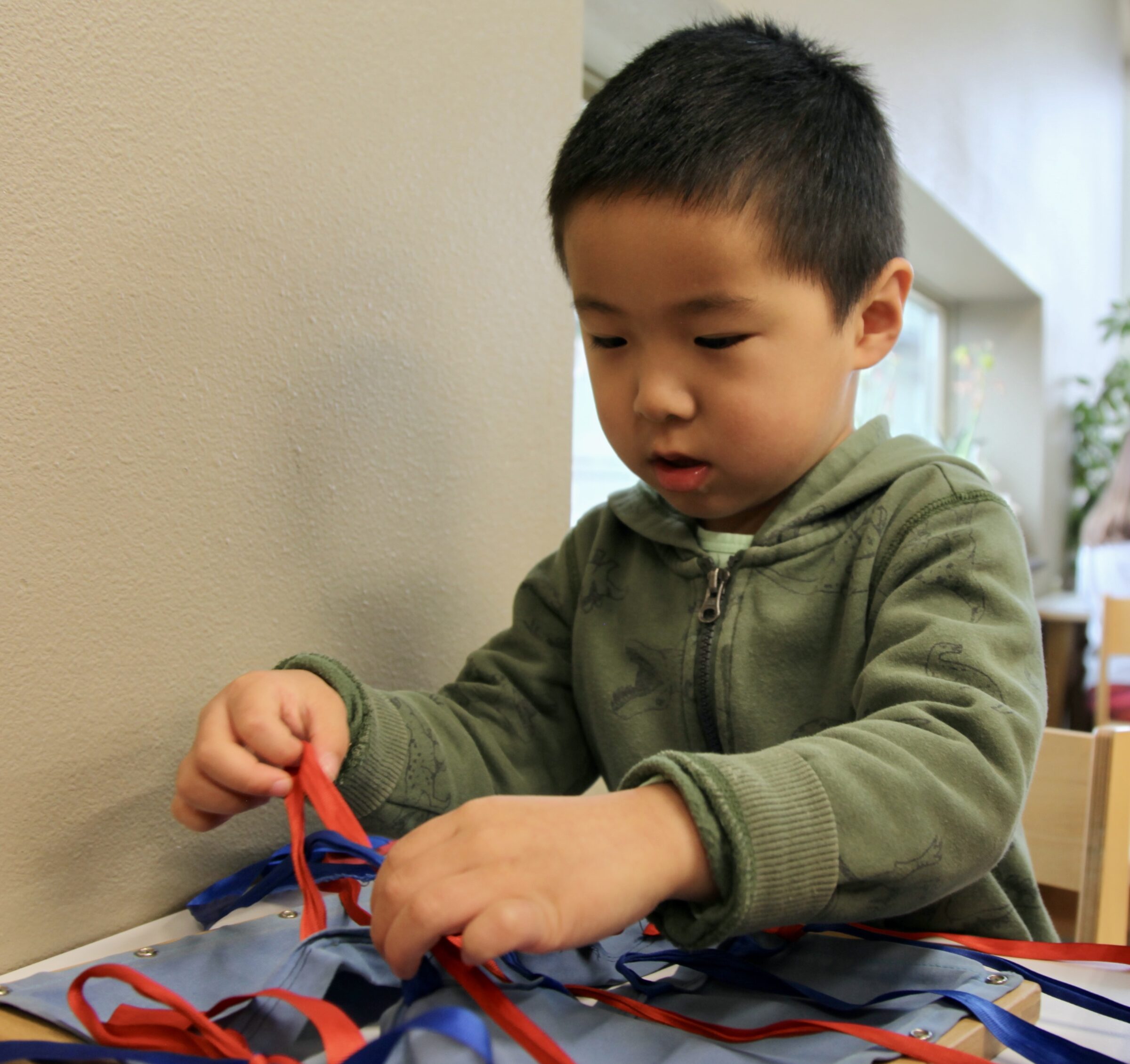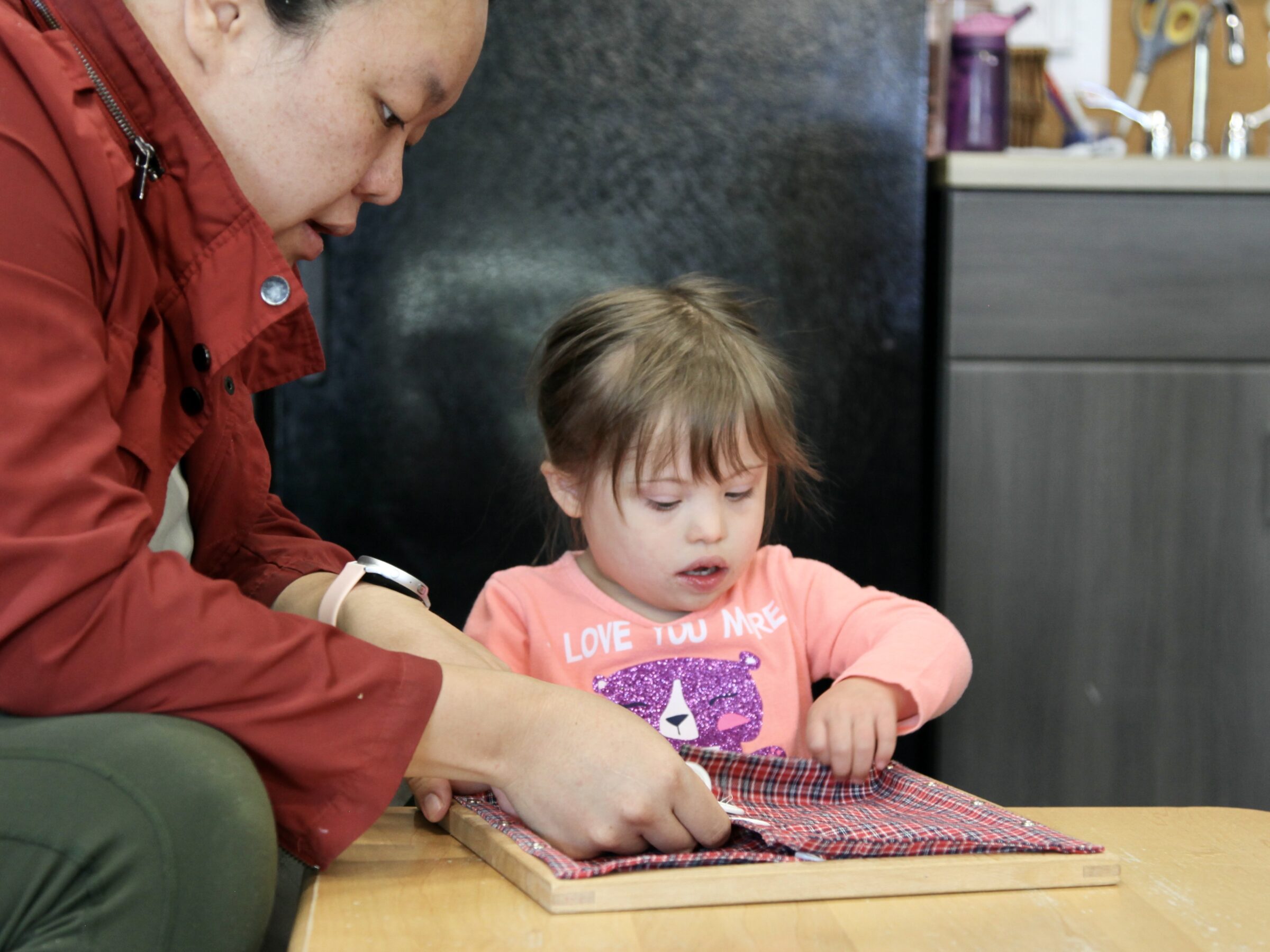Montessori Encyclopedia: Walking on the Line
Montessori Activities
How do you use this material?
The Ellipse is a line on the floor of the classroom. It is sometimes in tape, and sometimes painted. Occasionally, classrooms will have different or additional shapes, but the choice of an ellipse is very purposeful; more on that later.
A child removes their shoes to carefully walk on the line. First they’ll walk using natural steps, then add various challenges, such as walking heel-to-toe, balancing a beanbag on their head, or holding a bell without making it ring.
Sometimes music is played and children walk or move on the line in time with the music.
The Line is also used during birthday celebrations, when children sit behind the line and watch as the birthday child walks around the line, and the class sings, “the earth goes ‘round the sun, the earth goes ‘round the sun, it takes twelve months for the earth to go around the sun.”

What is a child learning?
This is a material for gross motor development. Because an ellipse is not a straight line, nor does it follow a regular curve, as a circle does, a child is constantly needing to adjust their balance, which makes it very challenging. This material is also developing self-control, since the work is walking on the line, not near the line or any other variation.
What does a child not know they’re learning?
As the song we sing at a birthday dictates, this is the path the Earth follows in the annual trek around the Sun. It can be difficult to visualize, but this representation is a subtle reminder and introduction to the astronomical sciences.
How can this be supported at home?
Balance is something that really appeals to young children. Once they’ve mastered walking, children are drawn to climbing stairs and ladders, and various physical activities that help them to exercise gross motor movements.

Finding play equipment or other arenas for children to work these muscles can be very satisfying for children, in addition to providing a safe outlet for a child who is demonstrating a need to climb. While it’s very natural to want to provide a lot of assistance for children who are climbing or balancing, it can actually be counterproductive, as it can give a false sense of security to the child. Small, safe falling, such as from a low (less than six inch) berm around a playground, helps children to develop equilibrium and a sense of their own abilities. Without this, children can get into unsafe situations, or not develop those climbing and balance skills.
Find a park or other outside area where climbing can be done safely, stay nearby though at a distance, and observe. Provide encouragement and guidance in climbing down, rather than physical help. In this way, children learn to not climb higher than they’re capable of helping themselves, and develop confidence in their physical capacities and courage in taking appropriate risks.
Written by:
Charlotte Snyder



